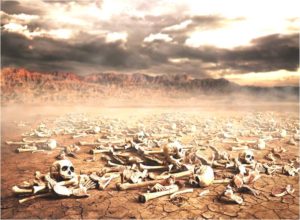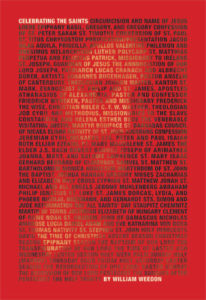Commemoration of Ezekiel
July 21
Today, we rejoice to remember the holy prophet Ezekiel.
Ezekiel served the Lord as a prophet primarily to the Judean exiles at the time of the Babylonian Captivity, having been carried captive by Nebuchadnezzar in 597 BC. He was the son of Buzi and thus part of the priestly family. Familiarity with the liturgy and ritual of the temple stamp his prophecy.
His initial prophecies were warnings to the Judeans that Jerusalem and the temple would be destroyed. He repeatedly had to counter false prophets who prophesied an eminent return from exile. In contrast, Ezekiel prophesied a long exile and complete destruction of the city. After his prophecies came true about the final destruction of the Holy City and its temple, Ezekiel’s words turned mainly to comfort. He foretold the destruction of the enemies of God’s people and a restoration to the land with a new temple.
 Most intriguing were his words about how God would rescue His scattered people and bring them home by giving them a new heart and putting His own Spirit within them (Ezekiel 36). He foretold that God would sprinkle them with clean water to accomplish this, a prophecy of the grace of Baptism.
Most intriguing were his words about how God would rescue His scattered people and bring them home by giving them a new heart and putting His own Spirit within them (Ezekiel 36). He foretold that God would sprinkle them with clean water to accomplish this, a prophecy of the grace of Baptism.
In his famous vision of the valley of dry bones (chapter 37), Ezekiel is given a glimpse of the resurrection where, as C. S. Lewis would put it centuries later, “death works backwards.” A valley of dead bones stretches before him. Many bones. All bleached white. The Lord challenges the prophet, “Can these bones live?” It is the question. The best the prophet can do is to refer the question back to God, “O Lord GOD, You know.” At the command of the Lord he prophesies over the dry bones and the bodies reassemble. At another command, he summons the breath, the Spirit of the Lord, and the dead bodies come to life and stand on their feet, a vast army. In such a way, the Lord promises Ezekiel that He will raise His people from their graves.
Another vision of the prophet is particularly important. He foresees the restored temple and, from the altar, a stream of water. It starts small, but it grows. It becomes a mighty river. Wherever it flows, everything lives. When we remember the promise of our Lord that His body is the true temple, this vision becomes clear. From Him, our living temple, flows the water (mingled with the blood!) that brings divine life to everything it touches. This is the image of Holy Baptism itself, flowing from the Lord’s body on His cross. That water brings to life those whom it touches. In fact, it makes them part of the very temple of  God Himself.
God Himself.
Some of the odd symbolism that Ezekiel employs finds an echo in the Revelation to St. John. The living creatures he saw surrounding the throne of God recur there. His prophecies about the battle between the enemies of God, Gog and Magog, find an answering echo as well. Both Ezekiel and St. John declare that the final victory in history belongs to the God who visits His people to wash them in living water and make them His very temple.
Prayer: Lord God, heavenly Father, through the prophet Ezekiel You continued the prophetic pattern of teaching Your people the true faith and demonstrating through miracles Your presence in creation to heal it of its brokenness. Grant that Your Church may see in Your son, our Lord Jesus Christ, the final end-times prophet whose teaching and miracles continue in Your Church through the healing medicine of the Gospel and the Sacraments; through Jesus Christ, our Lord. Amen.
Weedon, William Celebrating the Saints 122-123
